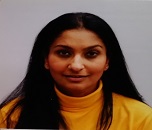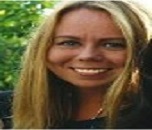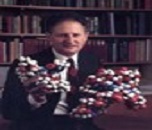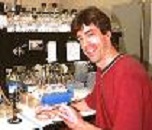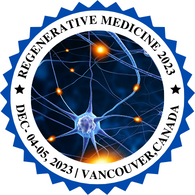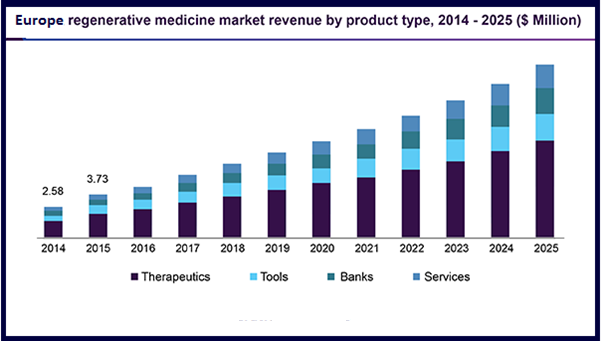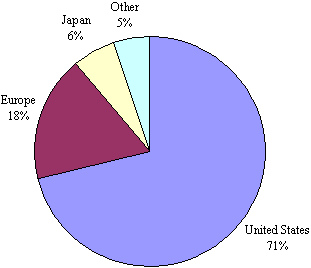Scientific Session
Track 1:Tissue Regeneration
Many of us might have observed that the tail of a lizard, if cut, can grow efficiently all over again. This is an example of tissue regeneration. Like lizards, in many other animals including humans tissue regrowth can be observed. By definition it means that the regrowth of damaged or affected tissue from rest of the part. The initial step is rearrangement of pre-existing tissue followed by de-differentiation and trans-differentiation of the cells. This involves cells called stem cells which have the potential to regenerate themselves. There are intrinsic signals that activate stem cells to undergo regeneration when needed. There are amazing instances of tissue regeneration, For Example heart regeneration in zebra fish. In humans, liver cells can regenerate themselves. But there are many cells and tissue that lack this ability. To help humans fight tissue damages in a better way tissue regeneration needs immediate attention. Researchers across the globe should come together to unleash the mystery of the signals and genetics that trigger regeneration in some tissues.
i. Animal models of tissue regeneration
ii. Molecular fundamentals of regeneration
iii. Intrinsic Tissue regeneration
iv. Guided Tissue Regeneration
v. Human tissue regeneration: Challenges in In-Vivo and In-Vitro regeneration
vi. In silico Tissue engineering
Related Conferences: Regenerative Medicine Conferences | Tissue Engineering Conferences:
8th Global Congress on Tissue Engineering and Regenerative Medicine, December 04-05, 2023 Vancouver, Canada.
Track 2: Advent of Microfluidics
Scaffolds are important part of tissue engineering. For a material to be certified as biomaterial of interest we need to test its bio-compatibility and cytotoxicity. Traditional methods are time consuming and do not offer in vivo conditions. A recent technology called Microfluidic technology allows to study cells in in-vivo condition with control of the fluid supply. Micro and sub-micrometer microfluidic channels are developed in patterns that control the flow, mixing of solutions and supply of nutrients. Another approach is developing a lithographic technique to manufacture microfluidic structures enclosed in a calcium alginate hydrogel seeded with cells.
Related Association: Chinese Society for Biomaterials, China, Polish Society for Biomaterials, Poland, German Society for Biomaterials, Germany, Italian Society for Biomaterials, Italy.
Track 3: Regenerative Medicine: A Renaissance
Many people crave for organs at times of crisis. Lucky are those who get it on time. But the shortage of organ has been a recurrent problem throughout the world. In order to combat this problem, the concept of regenerative medicine has arrived. Regenerative medicine, by definition, means engineering cells, tissues and organs to restore normaly. The biomedical approaches in this field are administering bio-active molecules that will trigger regeneration, immunomodulation therapy, transplantation of organs grown in vitro etc.
i. Transplantation
ii. Bio-artificial organs
iii. Progenitor stem cells
iv. Three-dimensional (3D) printing
v. Cell Therapy
Related Conferences: Regenerative Medicine Conferences | Tissue Engineering Conferences:
8th Global Congress on Tissue Engineering and Regenerative Medicine December 04-05, 2023 Vancouver Canada.
Track 4: Medical Implants and Prosthetics
To restore damaged parts, certain devices or tissues are implanted inside or on the surface of the patient. These are called medical implants. These also include prosthetics which mean artificial body parts. Others have function like monitoring body functions, delivering medication or providing support to organs and tissues. Some implants are derived from body parts while others are fabricated using metals and alloys. These can be incorporated permanently or may be removed after certain time. Surgical implants have enough risks. They may induce allergies, swelling or other immunological problems. They may have chances to break and even cause internal damage. More research is being carried on to reduce the risk and use them for benefits:
i. Orthopedics
ii. Breast implants
iii. Dental implants
iv. Cosmetic implants
v. Contraceptive implants
vi Sensory and neurological implants
Related Conferences: Regenerative Medicine Conferences | Tissue Engineering Conferences:
8th Global Congress on Tissue Engineering and Regenerative Medicine December 04-05, 2023 Vancouver , Canada.
Track 5: Drug Delivery And Tissue Engineering
Drug delivery has received attention in the recent years because in most cases the drugs do not reach the target organs and fail to deliver the therapeutic action. So, several ways of drug delivery are being researched upon. Apart from traditional methods of drug delivery, there are several other methods like liposomes-mediated, microspheres-encapsulated, gels etc. Nano-encapsulated drug delivery is also receiving attention due to slow release, biocompatibility, target-oriented features etc.Tissue engineering relies on the use of scaffolds. For tissue regeneration growth factors are required. The delivery of these factors determines the success of the process. To address this, various drug delivery routes are researched upon and applied in tissue engineering techniques.
i. Controlled Release of drugs
ii. Growth Factor
Related Conferences: Regenerative Medicine Conferences | Tissue Engineering Conferences:
8th Global Congress on Tissue Engineering and Regenerative Medicine, December 04-05, 2023 Vancouver, Canada.
Track 6: Gene Therapy In Relation to Tissue Science
Gene therapy deals with gene incorporation to reverse the genetic error or cure it by replacing with normal gene. The gene delivery system are generally viral and non-viral vectors. There are some genes that code for bio-signal molecules to trigger the proliferation and differentiation of cells. These are supposed to play an important role in tissue engineering and induce tissue regeneration. Tissue regeneration with some plasmid DNAs of growth factor have cited their therapeutic ability. Advanced researches have reported about cationized gelatin microspheres that allowed the controlled release of plasmid DNA and has several advantages.
i. Viral and non-viral vectors
ii. In vivo gene therapy
iii. Ex vivo gene therapy
iv. Augmented gene therapy
v. Germline therapy
vi. Genetic engineering
vii. Somatic Gene therapy
viii. Recombinant DNA Technologies
ix. Immuno-therapy
Related Conferences: Regenerative Medicine Conferences | Tissue Engineering Conferences:
8th Global Congress on Tissue Engineering and Regenerative Medicine; December 04-05, 2023 Vancouver, Canada.
Track 7: Aesthetic Skin Rejuvenation
Aging is a natural and inevitable phenomenon. Skin loses its juvenile luster with age. Permanent pimples, wrinkles and texture irregularities are very common. With advent of cosmetic surgery this can be reversed. The process is generally based on layer by layer removal of the surface cells and the new cells are thus formed.
i. Cosmetic surgery
ii. Laser resurfacing of skin
iii. 3D skin rejuvenation
Track 8: Bio-Imaging
Biomedical imaging deals with capturing images for diagnostic and therapeutic purposes. Light (endoscopy, OCT), X-rays (CT scans), magnetism (MRI), radioactive pharmaceuticals (nuclear medicine: SPECT, PET) or sound (ultrasound) are the devices used to take snapshot of the current pathological condition of an organ or tissue. The need for biopsy has been eliminated with advent of optical molecular imaging technologies. Biomedical image processing includes the investigation, improvement and presentation of images captured via various imaging technologies
i. Molecular biophysics
ii. Fluoroscence imaging
iii. Flow cytometry
iv. Biomedical imaging modalities and data acquisition
v. Image reconstruction
Related Conferences: Regenerative Medicine Conferences | Tissue Engineering Conferences:
8th Global Congress on Tissue Engineering and Regenerative Medicine December 04-05, 2023 Vancouver, Canada.
Track 9: Biosensors
A hardware that interacts with a biological system to obtain a signal for diagnostic and therapeutic purposes is termed as a biosensor. Biomedical signal processing processes the data obtained using biosensors to be interpreted by us. Weak signals are generated by our body. They vary according to our pathological conditions. They can be captured by biosensors and calibrated with signals obtained under normal conditions. The difference will help us estimate the condition of the patient.
i. Biomedical Signal Processing
ii. Bio-Robotics
iii. Diagnostic & Therapeutic Systems
iv. Tele-Medicine
v. Wearable & Implantable Technologies
Related Conferences: Regenerative Medicine Conferences | Tissue Engineering Conferences:
8th Global Congress on Tissue Engineering and Regenerative Medicine, December 04-05, 2023 Vancouver, Canada.
Track 10: Scaffolds and Matrix for Tissue regeneration
In native state, majority of the cells (except the red blood cells) in our body are anchorage dependent and remain attached to a rigid support called extracellular matrix (ECM). It plays a key role in providing structural support to the cells and adds to the mechanical properties of tissues. It also helps the cells respond to the signals of micro-environment. Due to highly dynamic properties of ECM, it cannot be mimicked. But, scientists have developed biomaterials and biopolymers that can act as ECM and serve the similar functions in engineered tissues. The biomaterials should have some features like bioactivity, porosity, bio-compatibility etc. There are four scaffolding approaches as of now: 1) Pre-made porous scaffolds for cell seeding 2) Decellularized extracellular matrix for cell seeding 3) Confluent cells with secreted extracellular matrix 4) Confluent cells with secreted extracellular matrix. Preparation of scaffolds is a challenging task. Various approaches are Nano-fiber self-assembly, Solvent casting and particulate leaching, Gas foaming, Laser-assisted bio printing etc..
i. Cell seeding
ii. Hydrogels
iii. Cell encapsulation and microencapsulation
iv. Biopolymers
v. Biomaterials.
vi. Cell sheets
Related Conferences: Regenerative Medicine Conferences | Tissue Engineering Conferences.
8th Global Congress on Tissue Engineering and Regenerative Medicine, December 04-05, 2023 Vancouver, Canada.
Track 11: Bio-printing
An alternative to scaffold-based approaches in tissue-engineering is organ printing. With tissue spheroids as building blocks, 3d functional living macro-tissues and organ constructs are fabricated layer by layer using bio-robots. Three steps involved in organ printing are development of digital image of actual organ (pre-processing), organ printing layer by layer in 3d environment (processing) and finally perfusion of the printed part and its maturation (post processing). Numerous studies have cited the importance of bio printing in generating 3d structure of tissues and organs and it has added another dimension to tissue engineering.
i. Tissue spheroid
ii. Bio-printer
iii. Future prospects
iv. Challenges
Related Conferences: Regenerative Medicine Conferences | Tissue Engineering Conferences:
8th Global Congress on Tissue Engineering and Regenerative Medicine; December 04-05, 2023 Vancouver, Canada.
Track 12: Tissue Engineering In the World of Flora
With increasing success of animal tissue engineering, scientists are trying the techniques on plants. A very recent study reveals that Use of 3D scaffolds have helped in studying plant development. Nano-fiber scaffolds were expensive some days back. But with technique called shear spinning it has been rendered cost effective and hence can be used to experiment with plants. Reports have shown that by growing in the nano-fibres, they adopt dramatic change in their behavior. 3-D plant tissue engineering promises to provide a new array of techniques for studying plant growth and development in vitro. The agricultural sector will also be benefitted as synthetic biology can be researched upon.
Related association in USA: Society For Biomaterials, Canadian Biomaterials Society, The International Society of Biomedical Polymers and Polymeric Biomaterials (ISBPPB), World Biomaterials Congress, The American Institute for Medical and Biological Engineering (AIMBE), Tissue Engineering and Regenerative Medicine International Society.
Track 13: Legal and ethical Issues in Tissue Engineering
As every research should have a moral base, tissue engineering too stands on some code of ethics. As it entails use of body parts of living species, there are some ethical regulations that bind the researchers to think before making a leap. It entails “Right to integrity of a person”, “protection of personal data”, “solidarity”, “Private life and right to information” etc. Similarly there are some legal constraints on the research and application of tissue engineering. These ethical, legal and social implications of tissue science must be noted as they will form the foundation for the ultimate success of this engineering.
Related Associations: Australasian Society for Biomaterials and Tissue Engineering, Australia, The Korean Society for Biomaterials, Korea, Netherlands Society for Biomaterials and Tissue Engineering, Europe.
Track 14: Stem Cells: Culture, Differentiation and Transplantation
Stem Cells are undifferentiated cells that have the potency to regenerate and differentiate into cells of specific lineage. They are classified as oligopotent, pluripotent, totipotent cells based on the different types of cells formed after differentiation. The broader classification includes embryonic stem cells and adult stem cells. Mesenchymal stem cell (MSC) is a variant of adult stem cell that gives rise to osteoblast, adipocytes and chondrocytes. MSC transplantation for tissue engineering has grabbed attention due to its immunosuppressive features. It is now in use to regenerate tissues of kidney, liver, heart, bone etc. Stem cell culture forms the base for the tissue engineering approach. A minor change in the culture environment may lead to altered potency of the cells. So special reagents and media are required. Moreover, 3D culture techniques and CRISPR genome editing technology are also in market.
i. Cancer Stem Cells
ii. Mesenchymal Stem Cells
iii. Stem Cell Therapy
iv. Induced Pluripotent Stem cells (IPSC)
Related Conferences: Regenerative Medicine Conferences | Tissue Engineering Conferences
8th Global Congress on Tissue Engineering and Regenerative Medicine December 04-05, 2023 Vancouver, Canada.
Track 15: Grafts In Tissue Engineering
Grafts are the parts of tissue that have been transplanted via surgical methods. Diverse types of grafting include skin grafting, bone grafting, vascular grafting and ligament repair. Skin grafting is a commonly used grafting technique. Wounds, burns and scars have been dealt with this efficiently. Skin cancer also finds its remedy with skin transplantation. Bone transplantation is a bit difficult but well-known process to replace bone damages. In Recent years cardiovascular disease are being combatted with the development of a tissue-engineered vascular graft (TEVG). The various approaches to generate TEVGs are scaffold-based methods and tissue self-assembly processes. The channels for vascular grafting are autologous arteries or veins. Synthetic vascular grafts are also available in the market nowadays.
i. Wound healing and repair
ii. Bone replacement
iii. Cartilage replacement
iv. Hip replacement
Related Association: Netherlands Society For Biomaterials and Tissue Engineering, Swiss Society for Biomaterials + Regenerative medicine, Biomaterials and Tissue Engineering Society, UK Society For Biomaterials, Scandinavian Society for Biomaterials, TERMIS-EU (formerly European Tissue Engineering Society).
Track 16: Nanotechnology in Tissue Engineering
Nanotechnology has wide spread applications. It can be used to fabricate biocompatible scaffolds at the nanoscale. This would control the release of biological factors, to regulate cell behaviors and finally lead to the creation of functional tissues. Biocompatible materials at Nano-scale can be used as medical implants for example bone substitutes and dental restoratives. ECM is a highly dynamic matrix. Nano-topographic patterns on ECM control response of the living cells. Substrates with varying nano-features are being engineered so that cell function due to topographic cues can be controlled.
i. Nanotechnology
ii. Nanomedicine
iii. Nanotopography
iv. Nanofabricated scaffolds
Related Conferences: Regenerative Medicine Conferences | Tissue Engineering Conferences:
8th Global Congress on Tissue Engineering and Regenerative Medicine, December 04-05, 2023 Vancouver, Canada.
Track 17: Tissue engineering and Cancer
Cancer is the most dreaded disorder. The exact cause and mechanism is yet not known. Diverse research is going on find an answer. Tissue engineering has been inter-related with cancer to find some ways. Using tissue engineering to comprehend cancer can be done by fabricating 3D constructs that will mimic tumor cells and help us know how cancer cell grow, spread and metastasize at the biological level. For testing drugs, 3D structures are more reliable. One approach has been to engineer tumors and understand mechanism of drugs administered on then in vitro. Tissue engineered cancer models can be used as test therapies.
Related Societies: Swiss Society for Biomaterials + Regenerative medicine, Switzerland , Biomaterials and Tissue Engineering Society, Turkey, Romanian Society for Biomaterials, Romania , The Hellenic Society for Biomaterials, Greece, Japanese Society for Biomaterials, Japan.
Track 18: Osteoarthritis and Rheumatoid arthritis
Breakdown of joint cartilage and underlying bone causes Osteoarthritis (OA). The symptoms include joint pain, stiffness, joint swelling and decreased range of motion. With time, it affects joints of knees, hip and pelvic region. Rheumatoid arthritis (RA), on the other hand, is an autoimmune disorder that affects joints. It results in swelling of joints with intolerable pain. These diseases have been addressed with various approaches of tissue engineering and regenerative techniques. Positive results have been obtained.
i. Signs and symptoms
ii. Risk factors
iii. Pathophysiology
iv. Diagnosis
v. Prevention
vi. Management
vii. Prognosis
Related Conferences: Regenerative Medicine Conferences | Tissue Engineering Conferences:
8th Global Congress on Tissue Engineering and Regenerative Medicine, December 04-05, 2023 Vancouver, Canada.

